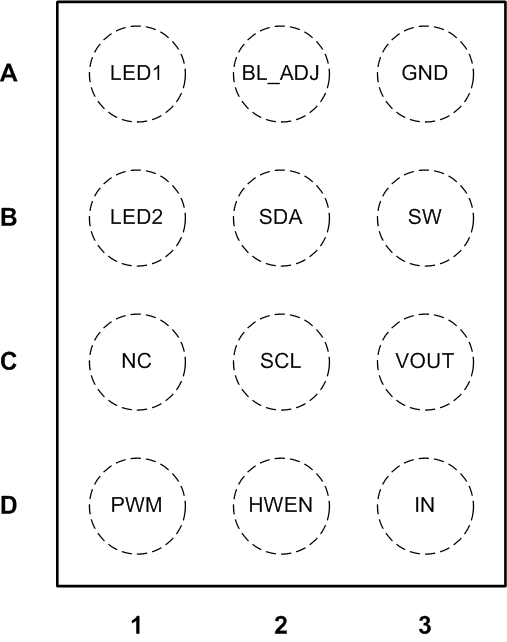SNVSA29 May 2015 LM36922
PRODUCTION DATA.
- 1 Features
- 2 Applications
- 3 Description
- 4 Revision History
- 5 Pin Configuration and Functions
- 6 Specifications
-
7 Detailed Description
- 7.1 Overview
- 7.2 Functional Block Diagram
- 7.3 Feature Description
- 7.4
Device Functional Modes
- 7.4.1 Brightness Control Modes
- 7.4.2 Boost Switching Frequency
- 7.4.3 Auto Switching Frequency
- 7.4.4 Backlight Adjust Input (BL_ADJ)
- 7.4.5
Fault Protection/Detection
- 7.4.5.1
Overvoltage Protection (OVP)
- 7.4.5.1.1 Case 1 OVP Fault Only (OVP Threshold Hit and All Enabled Current Sink Inputs > 40 mV)
- 7.4.5.1.2 Case 2a OVP Fault and Open LED String Fault (OVP Threshold Occurrence and Any Enabled Current Sink Input ≤ 40 mV)
- 7.4.5.1.3 Case 2b OVP Fault and Open LED String Fault (OVP Threshold Duration and Any Enabled Current Sink Input ≤ 40 mV)
- 7.4.5.1.4 OVP/LED Open Fault Shutdown
- 7.4.5.1.5 Testing for LED String Open
- 7.4.5.2 LED String Short Fault
- 7.4.5.3 Overcurrent Protection (OCP)
- 7.4.5.4 Device Overtemperature (TSD)
- 7.4.5.1
Overvoltage Protection (OVP)
- 7.5 Programming
- 7.6 Register Maps
- 8 Applications and Implementation
- 9 Power Supply Recommendations
- 10Layout
- 11Device and Documentation Support
- 12Mechanical, Packaging, and Orderable Information
Package Options
Mechanical Data (Package|Pins)
- YFF|12
Thermal pad, mechanical data (Package|Pins)
Orderable Information
5 Pin Configuration and Functions
YFF Package
12-Pin DSBGA
Top View

Pin Functions
| PIN | I/O | DESCRIPTION | |
|---|---|---|---|
| NUMBER | NAME | ||
| A1 | LED1 | Input | Input to current sink 1. The boost converter regulates the minimum voltage between LED1, LED2 to VHR. |
| A2 | BL_ADJ | Input | LED current adjust input. When BL_ADJ is driven to a logic high voltage the LED current steps down to the programmed low current value. |
| A3 | GND | Input | Ground |
| B1 | LED2 | Input | Input pin to current sink 2. The boost converter regulates the minimum voltage between LED1, LED2 to VHR. |
| B2 | SDA | I/O | Data I/O for I2C-Compatible Interface. |
| B3 | SW | Output | Drain Connection for internal low side NFET, and anode connection for external Schottky diode. |
| C1 | NC | Input | Unused Pin. Connect externally to GND. |
| C2 | SCL | Input | Clock Input for I2C-compatible interface. |
| C3 | OUT | Input | OUT serves as the sense point for overvoltage protection. Connect OUT to the positive pin of the output capacitor. |
| D1 | PWM | Input | Logic level input for PWM current control. |
| D2 | HWEN | Input | Hardware enable input. Drive HWEN high to bring the device out of shutdown and allow I2C writes or PWM control. |
| D3 | IN | Input | Input voltage connection. Bypass IN to GND with a minimum 2.2-µF ceramic capacitor. |